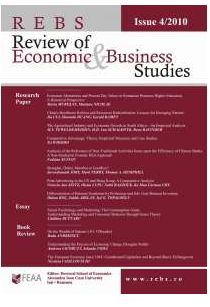COMPARATIVE ADVANTAGE: THEORY, EMPIRICAL MEASURES AND CASE STUDIES
COMPARATIVE ADVANTAGE: THEORY, EMPIRICAL MEASURES AND CASE STUDIES
Author(s): Tri WidodoSubject(s): Economy
Published by: Editura Universităţii »Alexandru Ioan Cuza« din Iaşi
Keywords: Revealed Comparative Advantage; Trade Balance; Products Mapping
Summary/Abstract: This paper consists of three main parts i.e. theory, analytical tool and case studies of comparative advantage. Firstly, we review the theory and various empirical measures of comparative advantage. We would argue that for the catching-up economies, like ASEAN countries, the meaning of “leading exported products” could be examined from the two points of view i.e. international competitiveness and country’s trade balance. Secondly, we combine two indexes of comparative advantage, i.e. Revealed Symmetric Comparative Advantage (RSCA) index by Dalum et al. (1998) and Laursen (1998), and Trade Balance Index (TBI) by Lafay (1992), which represent well the two points of view, to propose an analytical tool, namely “products mapping”. Thirdly, this analytical tool is applied to analyze exported products (defined as 3-digit SITC Revision 2) of the ASEAN countries. This paper concludes that in the cases of ASEAN countries, the higher the comparative advantage for a specific product, the higher the possibility of the country as a net-exporter becomes. This finding strongly supports the theory of comparative advantage.
Journal: Review of Economic and Business Studies (REBS)
- Issue Year: 2009
- Issue No: 4
- Page Range: 57-82
- Page Count: 26
- Language: English

